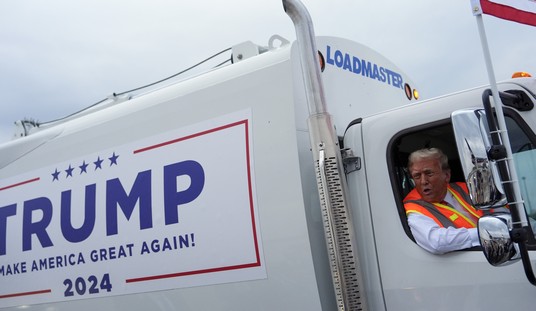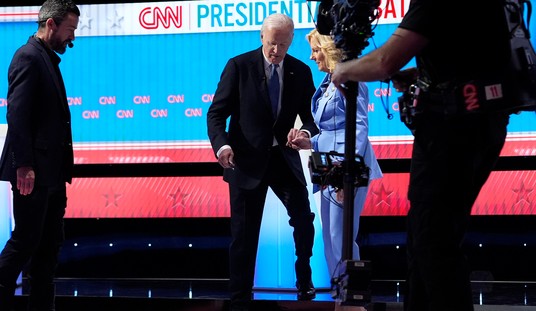That is, if you don’t consider lost interest and opportunity costs for taxpayer money. Thanks to an improving housing market, one of the two GSEs crippled in the 2008 financial crisis and bailed out by taxpayers turned a nice profit in the second quarter of $10.1 billion — all of which will go to the Treasury, bringing their balance close to 10% of the bailout principal:
Driven by a recovery in the U.S. housing market, Fannie Mae, the giant mortgage finance company, netted profits of $10.1 billion in the second quarter of 2013, its sixth consecutive quarter with positive results. The company, which has operated under federal conservatorship since 2008, reported its earnings Thursday.
Fannie Mae cited “a significant increase in home prices in the quarter” for its profit, which nearly doubled that of last year’s second quarter.
The strong showing leaves Fannie Mae with a net worth of $13.2 billion. Because federal rules require it to maintain a reserve of $3 billion, the company will pay $10.2 billion to the U.S. government this September. Fannie Mae says the payment will bring the total it has delivered to around $105 billion, following a federal rescue in 2008.
To survive the mortgage crisis that came to a head in the autumn of 2008, Fannie Mae received more than $116 billion from the U.S. government.
Freddie Mac also did well in Q2, scoring a $5 billion profit. NPR doesn’t mention how much Freddie will pay back in September, but Trade the News says most of that will go back to the Treasury, bringing their principal down to about $30 billion. The credit for the profit goes to both the recovering housing market and higher fees for its services, which allow the GSEs to withstand potential losses with more capital.
This comes as Barack Obama has finally focused attention on the final disposition of the GSEs. Despite widespread and bipartisan desire to rid the federal government of any role in their continued operations, the White House has gone almost three years without a mention, since passing the Dodd-Frank that ignored the issue. Almost any reform that gets the government out of the mortgage business would be an improvement — but is that what Obama is proposing? Yes and no, as I write in my column for The Fiscal Times today:
That the White House has finally taken some notice of the lingering wrecks of the 2008 collapse is encouraging. However, Obama proposes to get rid of Fannie and Freddie while transferring the government’s ability to distort the mortgage markets to the FHA. “We’ve got to keep housing affordable for first-time homebuyers,” Obama said, “[a]nd that means we’ve got to strengthen the FHA so it gives today’s families the same kind of chance it gave my grandparents to buy a home.”
The FHA began that process in 2009 as borrowers flocked to its doors after the GSEs went into government receivership, and the results are less than encouraging. FHA’s former chief credit officer Edward Pinto wrote last November that the FHA’s capital position turned negative nearly overnight, and that the FHA itself might need its own taxpayer bailout. The FY2012 actuarial study showed that the single-family program’s valuation dropped $23 billion in a year when the housing markets improved significantly, a serious red flag about the stability of its operation.
“If it were a private company,” Pinto warned, “it would be shut down.” Strengthening the FHA sounds suspiciously like a bailout to keep the path of intervention open in order to keep pursuing the kind of home-ownership political goals that shipwrecked Fannie and Freddie.
Obama also wants to keep government in the business of guaranteeing mortgage-backed securities (MBSs), the lever for the financial disaster of 2008 and the shipwreck of Fannie and Freddie. Supposedly, this would be financed by voluntary fees collected from investors, but Heritage wonders why this should be a government business at all. “But if a reinsurance guarantee is self-funding,” Heritage’s John Ligon and James Gattuso ask, “then why is the government needed?” Better yet, why should the government take the role of assessing risks in MBSs? They failed spectacularly at it once before, because Congress and two administrations were more concerned with expanding the housing market and incentivizing more risk-taking in lending than they were about the stability of the securities undergirding the market — which allowed the infection of the housing bubble to slam the financial sector with full force, and guaranteed a government bailout.
Let the private sector deal with MBSs issued by private lenders:
Anyone who believes that the revenue from the sale of guarantees would sit around in a lockbox to avoid taxpayer bailouts isn’t paying much attention to the Social Security fund.
Rather than simply swap Fannie and Freddie for the FHA and continue to have the government guarantee loans, we need to unwind the government’s ability to intervene in mortgage lending altogether. Private lenders should assume the risks of their own investments, which should incentivize them to be more careful than they were in the last decade, when they assumed – correctly – that the federal government would take ownership of GSEs in a crisis.
Putting GSE reform back on the table is a good step, but it’s only a step. Real reform will get the government out of the role of dictating lending outcomes, and keep it in the legitimate role of regulating the market even-handedly and preventing fraud and theft. Let’s not have a shell game where spinning off Fannie and Freddie is only a dodge to shift the levers of intervention to the FHA and an investor-guarantee agency that allow politicians to game the housing market in the future.







Join the conversation as a VIP Member